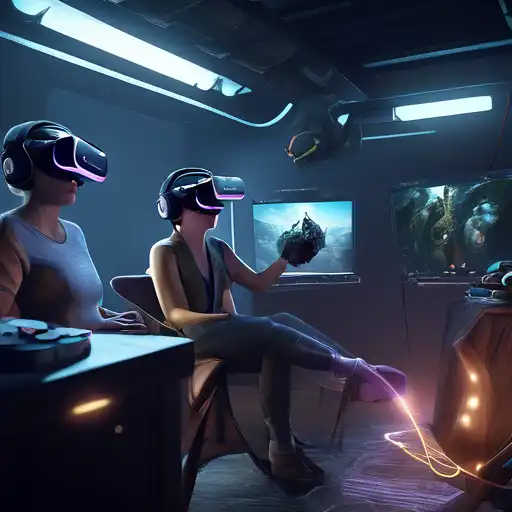Introduction to Virtual Reality
Virtual Reality (VR) has transformed the way we interact with digital content, offering unparalleled immersive experiences. From gaming to education, VR's applications are vast and varied. This guide will walk you through the essentials of creating immersive VR experiences that captivate and engage.
Understanding the Basics of VR
Before diving into VR development, it's crucial to grasp the foundational elements that make VR unique. These include 3D environments, user interaction, and the sense of presence. Each plays a pivotal role in crafting experiences that feel real and engaging.
Designing for Immersion
Immersion is the cornerstone of VR. To achieve it, focus on detailed environments, intuitive controls, and responsive feedback. Remember, the goal is to make users forget they're in a virtual world.
Key Components of Immersive Design
- High-quality 3D models and textures
- Smooth and natural user interactions
- Realistic audio effects
- Comfortable navigation to prevent motion sickness
Choosing the Right Tools and Platforms
Selecting the appropriate development tools is critical. Popular options include Unity and Unreal Engine, both offering robust support for VR development. Consider your project's scope and requirements when choosing.
Popular VR Development Platforms
- Unity with XR Interaction Toolkit
- Unreal Engine's VR template
- WebVR for browser-based experiences
Testing and Iteration
Testing is an ongoing process in VR development. Gather user feedback early and often to refine the experience. Pay special attention to comfort, usability, and immersion levels.
Optimizing for Performance
VR applications demand high performance to maintain immersion. Optimize your assets and code to ensure smooth frame rates across all target devices.
Performance Optimization Tips
- Use efficient 3D models
- Minimize real-time lighting
- Implement occlusion culling
Publishing and Distribution
Once your VR experience is polished, consider the best platforms for distribution. Options include app stores, direct downloads, or web-based platforms for broader accessibility.
Conclusion
Creating immersive VR experiences is a challenging yet rewarding endeavor. By focusing on immersion, choosing the right tools, and prioritizing user feedback, you can develop VR applications that stand out in this exciting field.
For more insights into VR development, check out our guide on VR development tools and tips for optimizing VR performance.
